Burton Street

Looking down towards Burton Street from Heath Hill.
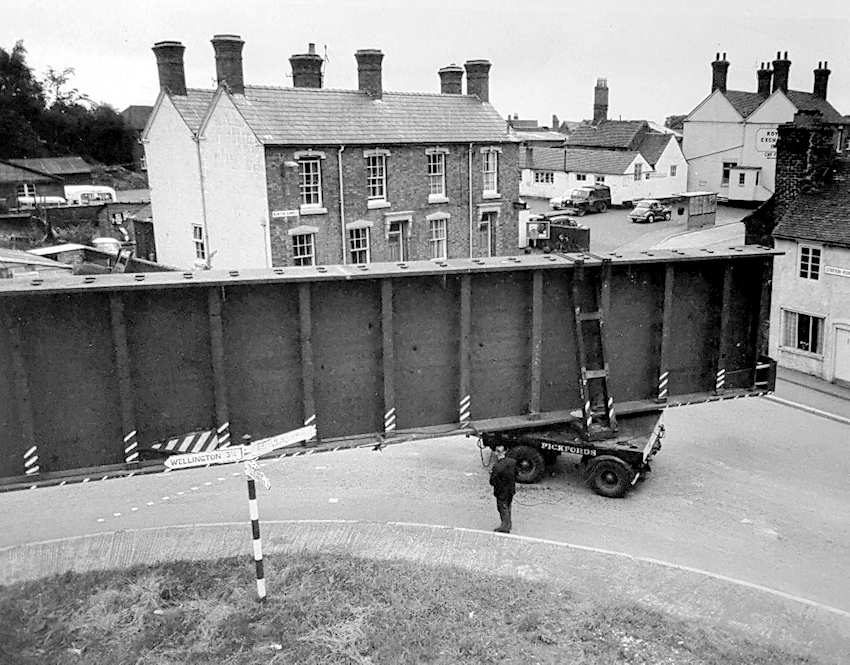
This was quiet a regular site at the junction of Burton Street and Station Road, a large girder from the Horsehay Company making its way to their customer, which could be any were in the world, on occasions the sign post had to be removed to get a larger one past.
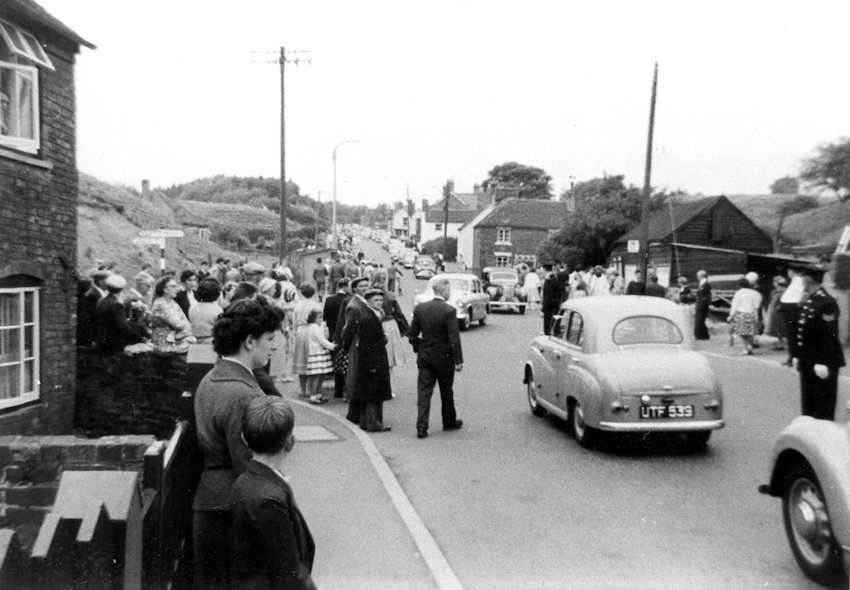
I don’t know what the occasion is of this 1950’s view of Heath Hill is? You can see Mr William Wilkes's undertaker's yard on the right.
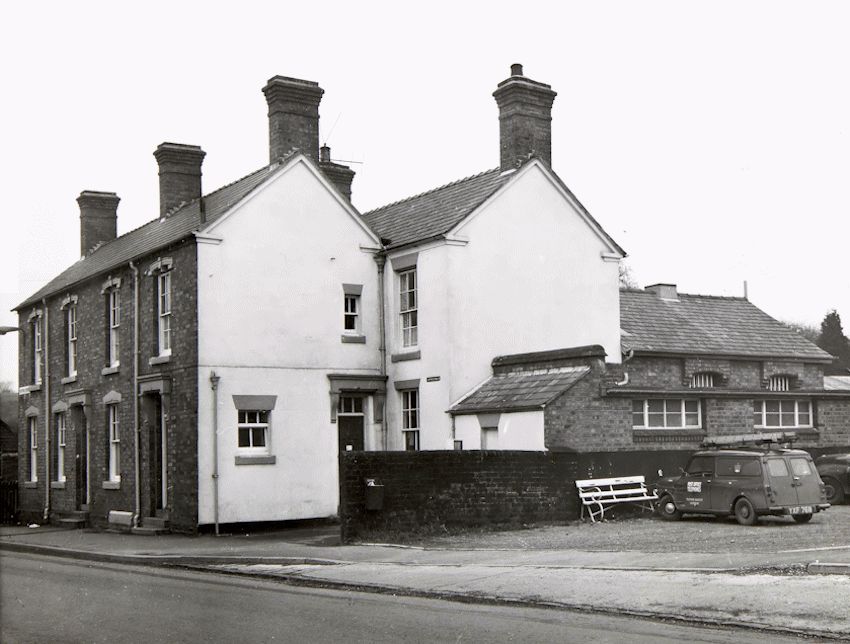
Just the other side of the old police station, behind a three foot stone wall and only just qualifying for a 'Burton Street' address, stood a ramshackle wooden shed of a building which was William ('coffin') Wilkes's undertaker's yard. Wooden planks lay all over the place, and frenzied knocking sounds emerged from the workshop as Mr. Wilkes and others set about erecting a dignified work of art out of a seeming sow's ear of a pile of materials. He didn't seem to have much competition thereabouts, and his future appeared secure so long as enough Dawley people managed to die at fairly regular intervals without creating an undue workload.
Police Station, a quite large building that seemed wholly over-adequate for the number of criminals in Dawley. It was reputed to have a lock-up for those members of society who couldn't be trusted to return next morning and apologise for being so drunk and inconsiderate the night before. Most people had no truck with the Police Station at all. It was merely an obligatory facility which every town had to have, yet ought to be left to get on with its own (secretive) business of keeping the town's low-life under control without hindering the rest of the population.
The police station used to the be a pub called “The Stag” it was demolished in 1979.
Photo courtesy of Dawley History Group.
The house on the far left is number 5 Burton Street and was the home of Mr. & Mrs. Tom Jones it stood back at a respectable distance from the traffic. Alderman Tom Jones was a revered owner of local, small mines. He was thus an expert on Dawley's geology, but also a Justice of the Peace, a Methodist local preacher whose sermons were laced with such down-to earth humour that you felt you should ask forgiveness for laughing so much in chapel, and a generally admirable character. This short and quite tubby man would pause and chat to anyone as he emerged from his Morris Oxford car wearing flat cap, square-shouldered grey coat, and wellies, in any given part of the district. The Jones's comfortable residence had 'The Cosy' cinema for a near neighbour.
5 Burton Street used to be the Kings Head public house.
Photo courtesy of Dawley History Group.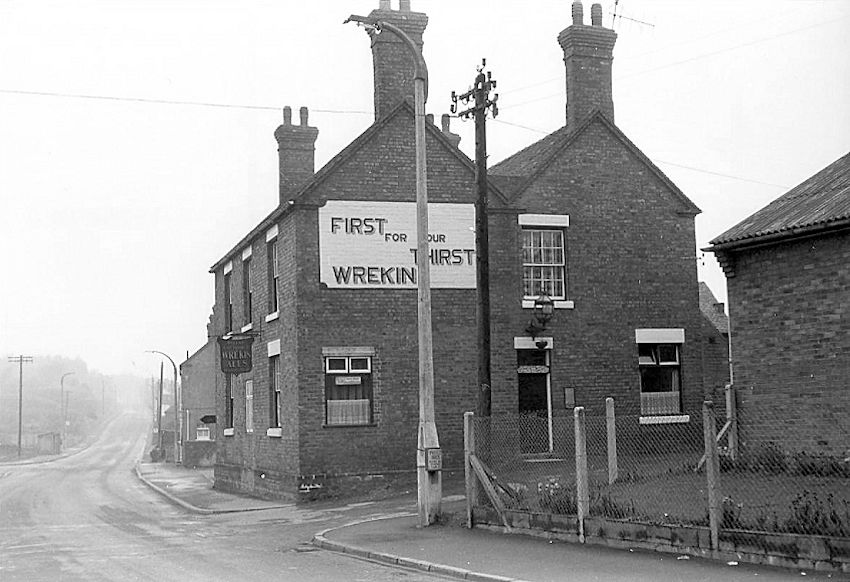
Royal Exchange was originally named the Royal Oak.
Photo courtesy of Dawley History Group.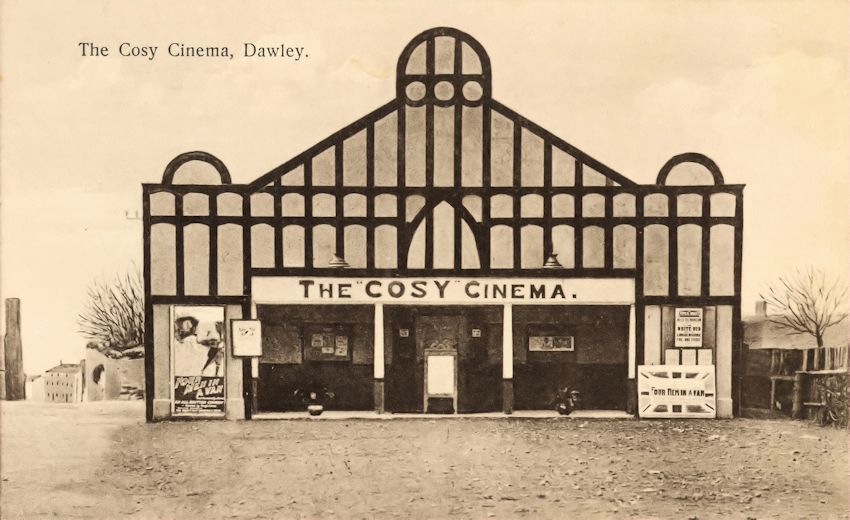
The Cosy
(The Flea Pit) was originally a cinema at Prees Heath during the First World War, and was moved in 1921 to Burton Street Dawley (opposite the Royal Exchange), It was owned by Mr A.Pendleton and Mr J.C.Williams, The projectionist was Mr Gilbert Corbett of Lawley Bank. It had a seating capacity of around 400; it was a large Nissen hut with a false frontage and a tin roof, so when it rained you couldn’t hear a thing. Out side toilets where added later, the one good thing was it had a contracted with MGM and showed some good films. It closed around 1955.
'The Cosy' practically defied description. How many towns had a cinema called 'The Cosy' anyway? It was unique in more than name. It too, stood back from the road so that you had to walk across about fifty yards of open space to reach its hallowed entrance. Much of the smallish building was of black, corrugated iron with a pointed roof, and the picture house was fronted by a plaster facade. It was the cheaper and more down market of Dawley's two cinemas. You entered a rather cramped foyer through an outer door and faced an even more cramped little box that was the ticket office. Only slim ladies needed to apply for the job of ticket seller. Rolls of 'deck-chair' tickets hung from its ceiling and the lady would rip one off in exchange for your nine pence. You then opened a door on either side of the foyer and were immediately plunged into a world of absolute darkness, like entering a ghost train, unsure of where you were or what would happen next. Relief was at hand as a torch with a red lens, like a giant cigarette suddenly moved towards you from the depths of the sloping gangway. A body then attached itself to the torch, your precious ticket was examined and this passport entitled you to a cryptic, torch lit descent of the aisle until a suitable middle row was pointed out to you. If the usherette was not too busy, the torch would be shone along the row for a couple of seconds giving you a rough idea of where you were heading. Left to your own devices and trying not to be too distracted by the screen, you then managed to scramble into a vacant seat. During the mid-fifties, a certain number of double seats were put in for those young couples whose main interest lay beyond the cogent magnetism of the film. On nights of particularly heavy rain, the deluge would hit the metal roof like an endless flow of six-inch nails, with a consequent drowning of the on-screen dialogue. Sometimes, a critical moment in the on-screen drama would be interrupted with a sudden display of upside-down numbers, in descending order, plopping across the screen until all went dark. A sound like a plug being released from a giant sink emanated from the loudspeakers. There would be much whistling and stamping of feet among the cinema's frustrated patrons. Rows of angry heads turned towards the projection room amid cries of 'put another shillin' in the meter, Gilbert'. At length, calm was restored as a shaft of white light, like a miniature search light beam thrust itself through the projection hole, and the actors resumed the story apparently none the worse for the undignified interruption. Communal applause and cheers would greet their return.
by Dave Gregory
Old folks rest room Burton Street, Dawley, built circa 1955.
Birmingham Daily Gazette - Monday 24 March 1952.
Volunteers will build a rest room for aged.
Twenty local bricklayers have volunteered to build a new rest room for old people at Dawley,
Shropshire. The volunteers will work in their spare time during the summer evenings.
Local firms will do plumbing, woodwork and electrical installation, either free or a
cost price. A local butcher, Mr Martin Bayley, has given the land and other preparations are now going ahead.
In 1947 Dawley (pop. 8,300) provided a rest room for their old people out of the war memorial fund.
The meeting place, a small converted storehouse, has become so popular that it gets overcrowded.
The new rest room will be in the main street.
The helping hand
Ald. Tom Jones, who first proposed the building of the new room at a town’s meeting,
said yesterday: “There has always been sympathy for the elderly in Dawley. In the sharp
winter of 1950 a scheme was run to supply old people with logs to supplement their coal rations.”
“Dawley also has a comforts fund for its old people. The Rest Room Committee already has some
money to go towards the new room. The remainder will be raised by public appeal.”
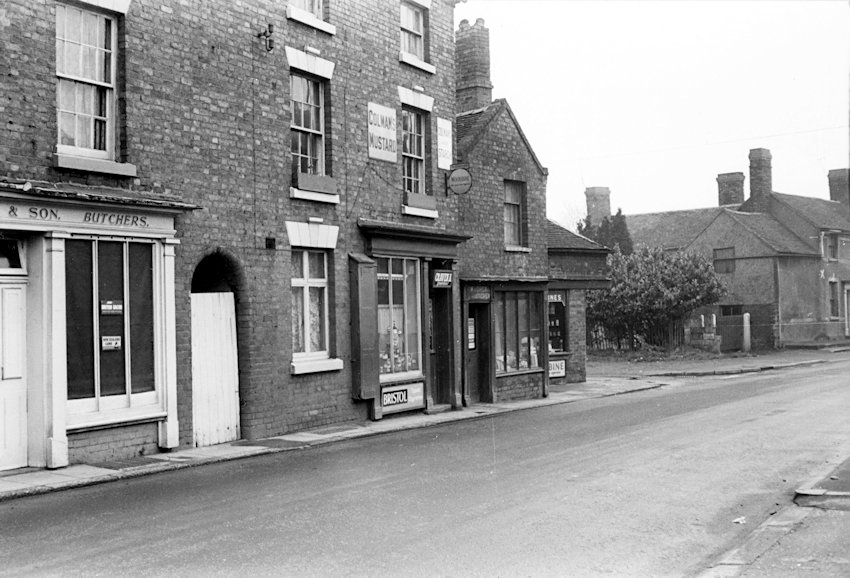

The shop on the corner was number 9 & 10 Burton Street and from the 1930’s to the 1950’s was run by Frances Morgan, he was born in Dawley and lived at 10 New Street in 1911 age 20 and a grocer’s assistant, in the 1960’s Joyce Morgan took over the shop, and then Arnold Wright but I don’t have a date.
 Photo courtesy of Dawley History Group.
Photo courtesy of Dawley History Group.